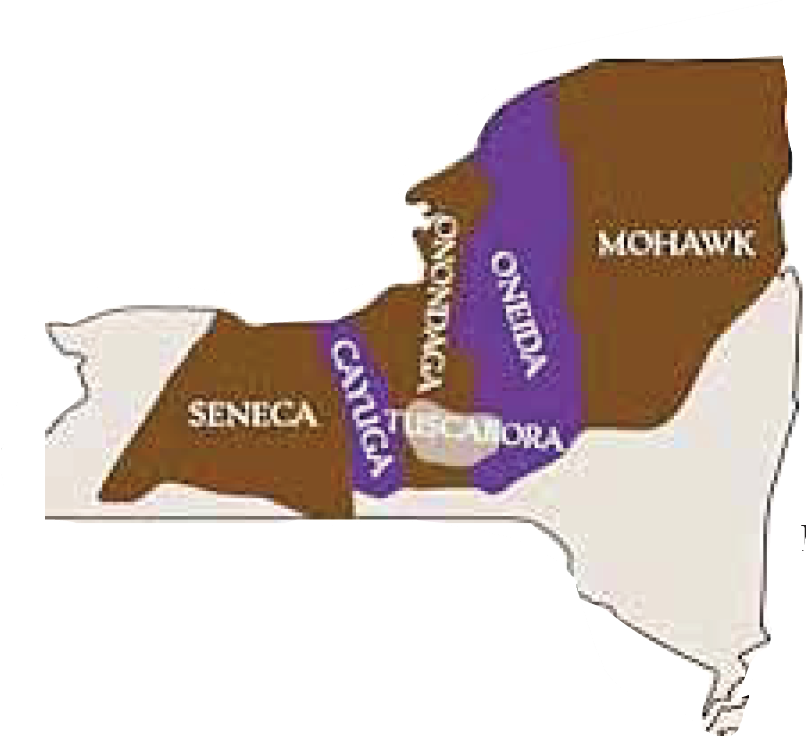
Image: Map of the Haudenosaunee before it was made into New York State
The Five Nations, comprised of the Seneca, Cayuga, Onondaga, Oneida, and Mohawk, united in confederation about the year A.D. 1200. This unification took place under the "Great Tree of Peace" and each nation gave its pledge not to war with other members of the confederation. Around 1720, the Tuscarora nation was admitted into the league as the sixth member. Confederacy members referred to themselves as "Haudenosaunee," which translates to "The People of the Longhouse." They saw their confederacy as a symbolic version of their traditional longhouse dwellings, stretching across most of what is today New York State. The Mohawks were the guardians of the eastern door in the lower Mohawk Valley area. The Oneidas occupied the upper Mohawk Valley and the area of modern day Oneida, NY. The Onondagas were the keepers of the council fire in the center of the "longhouse," in the modern day greater Syracuse area. The Cayugas occupied the finger-lakes area and the Seneca were the guardians of the western door in the modern Rochester-Buffalo NY area.
Through a matriarchal hierarchy and a men's council, the Six Nations employed great executive ability in governing themselves and other nations. Situated upon the headwaters of the Ohio, Hudson, Delaware, Susquehanna, Chenango, Mohawk, and St. Lawrence Rivers, the Six Nations held within their jurisdiction the passageway to the interior of the continent, and could easily travel in any direction. The military successes of the Six Nations left them in a strategically strong position. They traveled far beyond their own borders, conquering many Indian nations making them tributary nations. At one time, their domain reached north to the Sorel River in Canada, south to the Carolinas, west to the Mississippi, and east to the Atlantic. The Six Nations were easily the dominant Indian confederacy in the northeast and northwest areas of America.
The arrival of Europeans in their lands offered the Six Nations new opportunities of expanding their influence by becoming a dominant force in the fur trade industry. Initially their main trading partners were the Dutch; which then changed to the English after the Dutch ceded their land claims in America to England in 1660. The Confederacy's relationship with France was not amicable, as France had initially aligned themselves with the Abenaki, long time foes of the Nations. Six Nations/French relationships see-sawed back and forth between periods of peace and violence.
